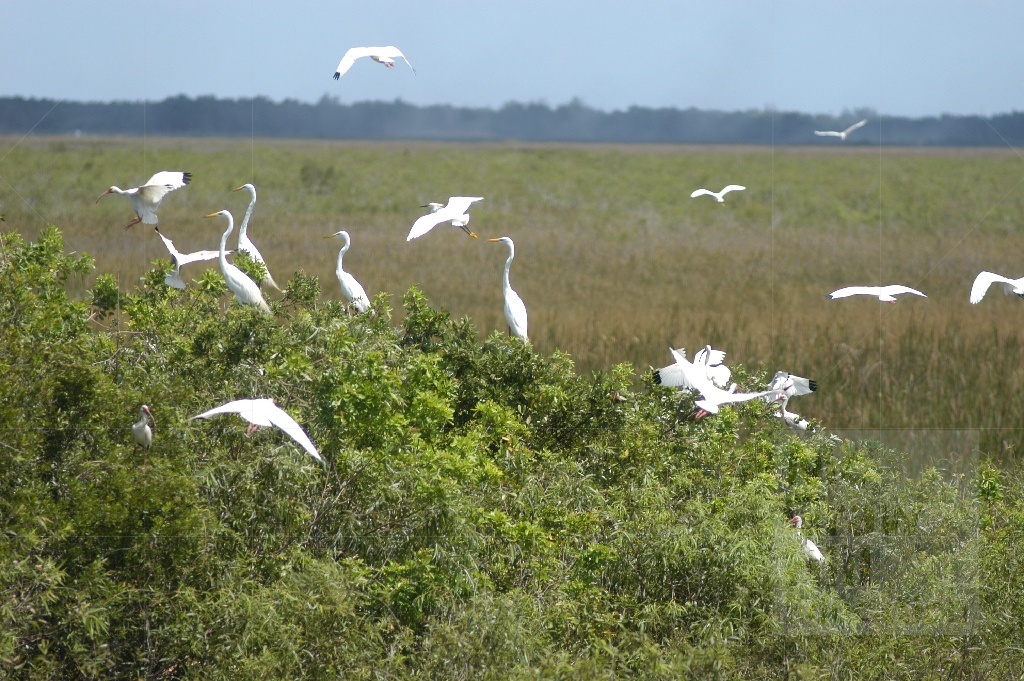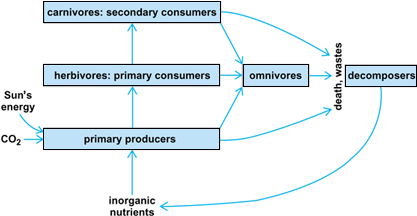Key Concepts
The subdiscipline of biology that concentrates on the relationships between organisms and their environments. Ecology, also called environmental biology, is concerned with patterns of distribution (where organisms occur) and with patterns of abundance (how many organisms occur) in space and time. It seeks to explain the factors that determine the range of environments that organisms occupy and that determine the abundance of organisms within those ranges. It also emphasizes functional interactions between co-occurring organisms. In addition to its character as a unique component of the biological sciences, ecology is both a synthetic science and an integrative science because it often draws upon information and concepts in other sciences, ranging from physiology to meteorology, to explain the complex organization of nature (Fig. 1). See also: Biology; Environment

An environment comprises all of those factors external to an organism that affect its survival, growth, development, and reproduction. It can be subdivided into physical, or abiotic, factors, and biological, or biotic, factors. The physical components of the environment include all nonbiological constituents, such as temperature, wind, inorganic chemicals, and radiation. The biological components of the environment include the organisms. A somewhat more general term is habitat, which refers in a general way to where an organism occurs and the environmental factors present there.
Recognition of the unitary coupling of an organism and its environment is fundamental to ecology; in fact, the definitions of organism and environment are not separate. Environment is organism-centered because the environmental properties of a habitat are determined by the requirements of the organisms that occupy that habitat. For example, the amount of inorganic nitrogen dissolved in lake water is of little immediate significance to zooplankton in the lake because they are incapable of utilizing inorganic nitrogen directly. However, because phytoplankton are capable of utilizing inorganic nitrogen directly, it is a component of their environment. Therefore, any effect of inorganic nitrogen upon the zooplankton will occur indirectly through its effect on the abundance of the phytoplankton that the zooplankton feed upon. See also: Phytoplankton; Zooplankton
In addition to the environment affecting an organism, the organism also affects its environment. Growth of phytoplankton may be nitrogen-limited if the number of individuals has become so great that no more nitrogen is available in the environment. Zooplankton, which is not limited by inorganic nitrogen, can promote the growth of additional phytoplankton by consuming some individuals, digesting them, and returning part of the nitrogen to the environment.
Ecology is concerned with the processes involved in the interactions between organisms and their environments, with the mechanisms responsible for those processes, and with the origin (through evolution) of those mechanisms. It is distinguished from such closely related biological subdisciplines as physiology and morphology because it is not intrinsically concerned with the operation of a physiological process or the function of a structure; instead, it is concerned with how a process or structure interacts with the environment to influence survival, growth, development, and reproduction. See also: Physiological ecology (animal); Physiological ecology (plant)
Scope
There are a wide variety of approaches to ecology because of its broad, comprehensive character. Ecological studies can be characterized by the type of organisms studied, the habitat where studies take place, the level of organization that is of interest, and the methodology used. These are nonexclusive categories, and ecologists combine them in various ways while doing research. Major subdivisions by organism include plant ecology, animal ecology, and microbial ecology. Subdivisions by habitat include terrestrial ecology, the study of organisms on land; limnology, the study of freshwater organisms and habitats; and oceanography, the study of marine organisms and habitats. See also: Limnology; Marine ecology; Microbial ecology; Oceanography
The levels of organization studied range from the individual organism to the whole complex of organisms in a large area. Autecology is the study of individuals, population ecology is the study of groups of individuals of a single species or a limited number of species, synecology is the study of communities of several populations, and ecosystem ecology (systems ecology) is the study of communities of organisms and their environments in a specific time and place.
Higher levels of organization include biomes and the biosphere. Biomes are collections of ecosystems with similar organisms and environments and, therefore, similar ecological properties. All of Earth's coniferous forests are elements in the coniferous forest biome. Although united by similar dynamic relationships and structural properties, the biome itself is more abstract than a specific ecosystem. The biosphere is the most inclusive category possible, including all regions of Earth inhabited by living things. It extends from the lower reaches of the atmosphere to the depths of the oceans. See also: Biome; Biosphere
The principal methodological approaches to ecology are descriptive, experimental, and theoretical. Much ecology research is descriptive, concentrating on describing the variety of populations, communities, and habitats throughout Earth. Experimental ecology, which involves manipulating organisms or their environments to discover the underlying mechanisms governing distribution and abundance, has become of increasing importance since the mid-1960s. Theoretical ecology uses mathematical equations based on assumptions about the properties of organisms and environments to make predictions about patterns of distribution and abundance. It also has become of increasing importance. All of these approaches, however, are evident in the origins of ecology. See also: Theoretical ecology
Ecosystem
An ecosystem comprises the organisms and physical factors in a specific location that are interrelated through the flow of energy and chemicals to form a characteristic trophic structure (Fig. 2). The concept of the ecosystem is fundamental to ecology and may be applied at various levels of organization, although it commonly encompasses several different species. The trophic structure of an ecosystem characterizes organisms according to their feeding level and how those feeding relationships of species result in specific patterns of energy flow and chemical cycling. The living mass of a given population or trophic level at any given time is called biomass. A change in mass with time is referred to as net productivity. See also: Biological productivity; Biomass; Ecosystem; Trophic ecology

Autecology
Autecology is the study of particular organisms, typically directed toward determining the traits that they possess, and the traits that they lack, which allow them to occupy, or be excluded from, certain environments. Autecology includes physiological ecology, which emphasizes the role of physiological processes, and chemical ecology, which emphasizes the role of biochemical traits. See also: Chemical ecology
Population ecology
Population ecology is the study of the vital statistics of populations, and the interactions within and between populations that influence survival and reproduction. Population ecologists are concerned with the balances between births and deaths that determine the rate of change of population size through time. Density (the number of organisms per unit area) is a fundamental property of populations. See also: Population ecology
Synecology
Synecology is the study of groups of populations co-occurring in time and space; it is also called community ecology. Synecology is concerned with factors controlling the species composition of communities and why species composition changes in different environments and with time in the same habitat. Species composition of a community may include density, biomass, or productivity of individuals of different species. See also: Ecological communities; Species concept
Systems ecology
Systems ecology is the study of dynamic relationships between the units of the ecosystem, particularly those relationships that influence rates of energy flow and chemical cycling. The ecosystem concept, as mentioned previously, can be applied to many different levels of organization and varying degrees of complexity. Ecosystem science, or systems ecology, can be broadly divided into approaches concerned with relationships between trophic levels and approaches that engage with specific details of population dynamics of community organization within trophic levels. In both approaches, the goal is to develop mechanistic explanations for the observed behavior of the system as a whole. Often, this goal is accomplished through simulation modeling. See also: Ecological energetics; Mathematical ecology; Simulation; Systems ecology
Applied ecology
Applied ecology is the branch of ecology dealing with practical problems of immediate social importance. Ecology is often confused in the minds of laypersons with the environmental movement, that is, a social interest group concerned with environmental degradation and problems of resource supply to human societies. Applied ecology makes a fundamental contribution to those social and political concerns by identifying environmental problems, determining their significance, and suggesting potential solutions. Among the environmental issues to which ecology has made an important contribution have been problems of population growth and resource supply, acid rain, eutrophication, pollution, and range management, as well as the ecological consequences of global climate change and bioterrorism. See also: Applied ecology; Global climate change





